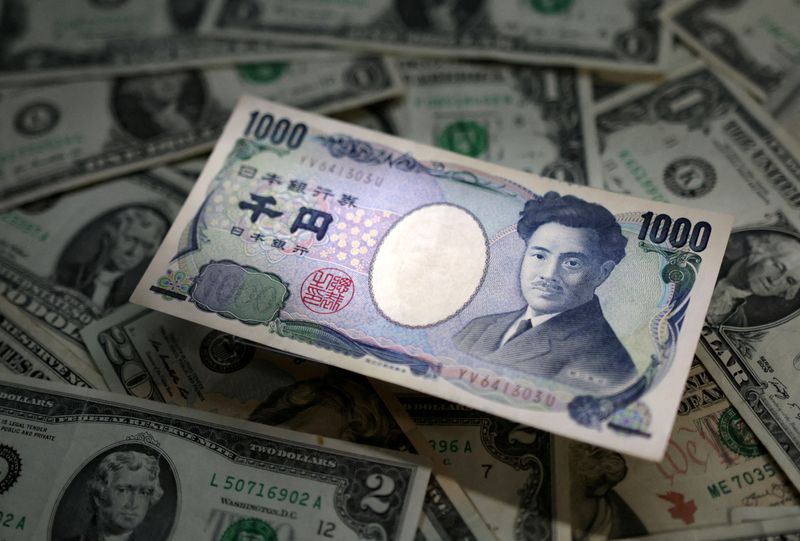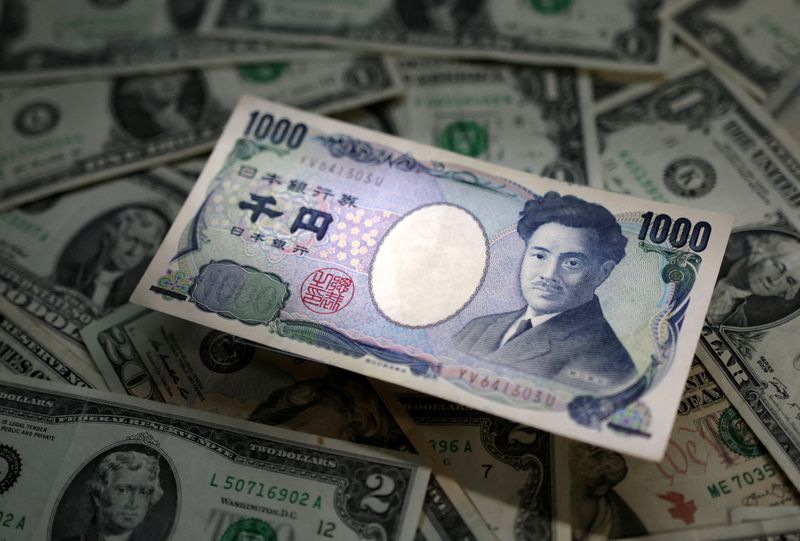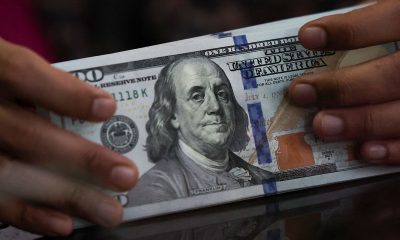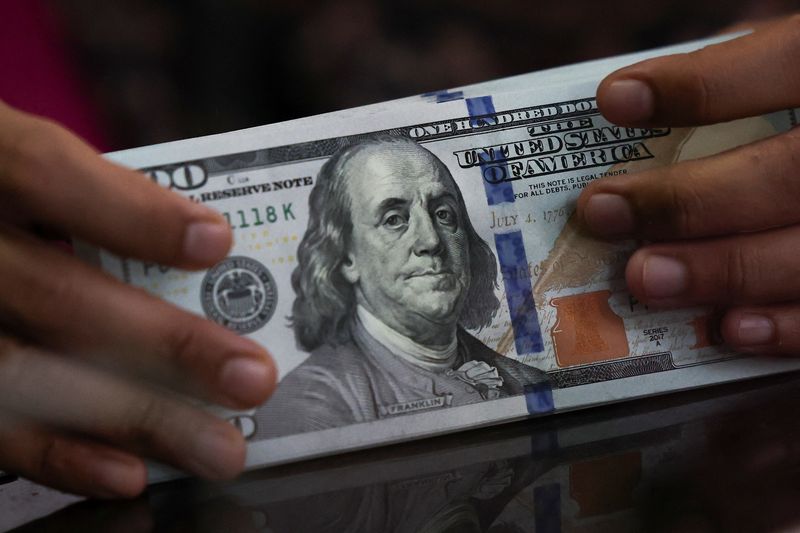Forex
US dollar struggles for direction ahead of data despite rise in yields

By Stefano Rebaudo
(Reuters) -The dollar struggled for direction on Tuesday as investors were cautious ahead of inflation data due on Wednesday, while U.S. Treasury yields rose with markets scaling back their bets on future Federal Reserve rate cuts.
The yen hovered near multi-decade lows, keeping traders on alert for any signs of intervention.
Traders in Fed fund futures bet on a total of 62 basis points (bps) of Federal Reserve rate cuts late on Monday, which was the lowest rate-cut expectation since October last year and down from 150 basis points in January.
The prospect of a first 25 bps cut in June had a 49% probability, down from 57% a week ago, CME Group (NASDAQ:) data showed.
The U.S. dollar ended last week lower as traders digested mixed economic data, including an unexpected slowdown in U.S. services expansion and U.S. job growth exceeding expectations.
“We’ve got to be careful always with these (U.S.) payroll numbers because they are very vulnerable to significant revisions over time,” said Guy Miller, chief market strategist at Zurich Insurance Group (OTC:).
“But it does paint a picture of a labour market that is still tight,” he added.
The , which tracks the currency against six major peers, fell by 0.01% to 104.05.
U.S. consumer price inflation for March on Wednesday will provide further clues about the Fed policy path.
“After upside surprises, there is an understandable caution over a potential weaker print that would quickly see June rate cut expectations increase again,” Derek Halpenny, head of research global markets at MUFG Bank, said.
Meanwhile, the Fed kept sending hawkish signals.
Dallas Fed President Lorie Logan said on Friday, after jobs data, argued against any imminent push toward easier monetary policy, while Bank of Chicago President Austan Goolsbee said on Monday the Fed must weigh how much longer it can maintain its current rate stance without damaging the economy.
Some analysts said geopolitical risk might increase demand for safe-haven assets, including the U.S. dollar.
Hopes of a ceasefire in Gaza diminished after Hamas said Israel’s proposal that it received from Qatari and Egyptian mediators did not meet Palestinian factions’ demands.
The U.S. dollar added 0.02% to 151.94 yen, holding near a 34-year high of 151.975 yen hit last month as Japanese officials continued trying to talk up the currency.
The threat of intervention has kept the dollar from breaching the closely watched 152 yen level.
“While a break of 152.00 may not trigger forex intervention immediately, we would see a strong chance of the Ministry of Finance (MoF) acting to prevent a move to 155.00,” said Jane Foley, senior forex strategist at RaboBank.
“Strong U.S. inflation data and soft Japanese economic numbers would increase the risk of the MoF being forced into taking action,” he added.
Ryota Abe, an economist at SMBC, sees the yen moving in a tight range from 151.0-152.5.
Also on Tuesday, Bank of Japan Governor Kazuo Ueda said the central bank must consider reducing the degree of monetary stimulus if inflation accelerates.
The euro rose 0.1% to $1.0869, while sterling was at $1.2687, up 0.26% on the day.
Euro zone banks lowered the bar on mortgage approvals last quarter for the first time in over two years, but demand for credit kept falling amid high borrowing costs and a stagnant economy, an ECB survey showed on Tuesday.

The ECB lending survey could influence ECB communications at its Thursday policy meeting, according to Shreyas Gopal, forex strategist at Deutsche Bank Research.
Analysts expected the ECB to hold rates this week, while reiterating its decisions will remain data-dependent.

 Forex3 years ago
Forex3 years agoForex Today: the dollar is gaining strength amid gloomy sentiment at the start of the Fed’s week

 Forex3 years ago
Forex3 years agoUnbiased review of Pocket Option broker

 Forex3 years ago
Forex3 years agoDollar to pound sterling exchange rate today: Pound plummeted to its lowest since 1985

 Forex3 years ago
Forex3 years agoHow is the Australian dollar doing today?

 Cryptocurrency3 years ago
Cryptocurrency3 years agoWhat happened in the crypto market – current events today

 World3 years ago
World3 years agoWhy are modern video games an art form?

 Commodities3 years ago
Commodities3 years agoCopper continues to fall in price on expectations of lower demand in China

 Economy3 years ago
Economy3 years agoCrude oil tankers double in price due to EU anti-Russian sanctions





























